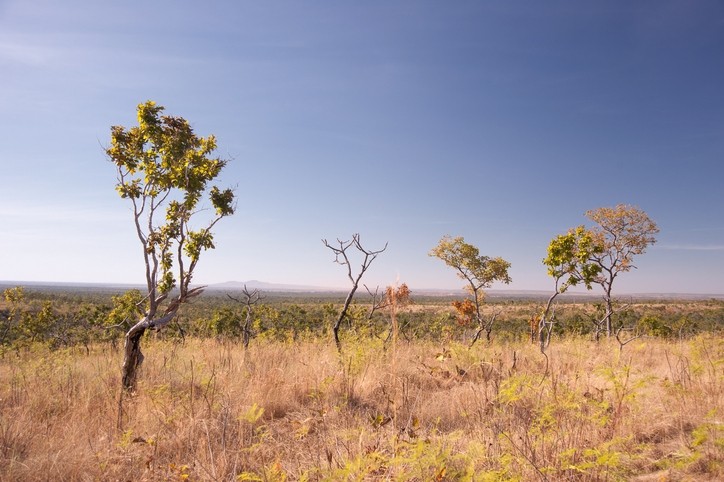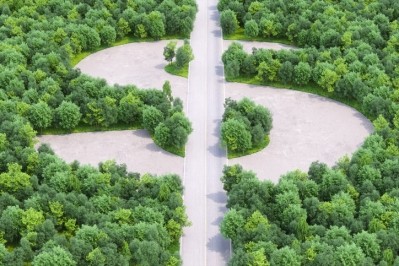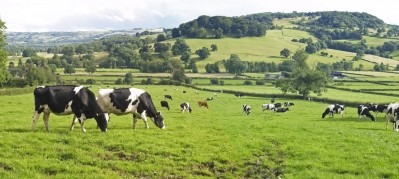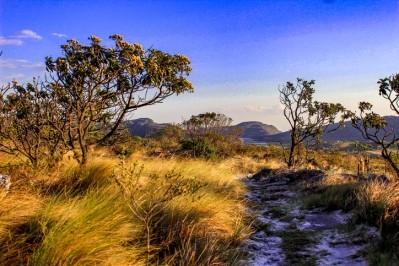Tesco, Nutreco and Grieg Seafood announce funding for soy farmers in the Cerrado region of Brazil

They said the Funding for Soy Farmers in the Cerrado initiative is designed to conserve native vegetation and biodiversity in the Cerrado region, halting deforestation by providing financial incentives to farmers to produce soy only on existing agricultural land.
By doing so, the farmers would be preserving more land than they are legally required to, under the Brazilian Forest code, as native vegetation.
The companies are all signatories of the Business Statement of Support (SoS) to the Cerrado Manifesto.
Soy is a key ingredient used in animal feed in Tesco’s supply chain. The UK retailing giant’s contribution to the Cerrado fund is significant - it is pledging £10m (US$13m) over the next five years. Dutch group, Nutreco, which has two divisions, Trouw Nutrition for animal nutrition and Skretting for aqua feed, has committed to giving €1m to the fund over the coming five years.
The Bergen, Norway headquartered salmon farmer, Grieg Seafood, said it has pledged to contribute US$2 per ton of Brazilian soy it uses in its fish feed for the next five years, an approach it said was in accordance with the guidelines of the initiative. The producer's annual soybean imprint is around 30,000 tons; it said it expects its soy footprint to remain stable over the next few years.
Call to arms
International soy-value chain companies, foundations and governments are being called on to support this initiative by contributing financially.
Nutreco CEO, Rob Koremans, said the Funding for Soy Farmers in the Cerrado initiative is a new breed of conservation protection that recognizes responsible action by landowners interested in tackling climate-related issues, particularly in environmentally critical environments and biomes. “Soy is a key ingredient in global animal and aquaculture feed production, and I hope that other companies, particularly within the feed industry, will come forward and commit to this initiative over the coming months.”
Tesco Group CEO, Dave Lewis, echoed that statement. The initiative, he said, was “an important next step in the Cerrado’s sustainability journey, but it will only be truly transformative if more organizations come forward and support it.”
Julia Hart, spokesperson for Nutreco, told FeedNavigator that companies voluntarily determine their contribution to the fund based on a number of different factors including:
- The company’s soy footprint
- The cost-effectiveness of this industry-wide approach compared to alternative approaches in delivering the company’s commitment to zero deforestation soy.
- How important Brazilian soy is to their business.
The Brazilian Cerrado
The Cerrado region is a globally significant carbon stock, but 250 million tons of carbon have been released annually from deforestation in this landscape – equivalent to the emissions of 53 million cars. Protecting the remaining vegetation, which absorbs huge amounts of carbon dioxide, is seen as critical in reducing global warming.
However, Cerrado farmers are subject to much less stringent deforestation limits than those in the Amazon rainforest, being required to preserve between 20-35% of the natural cover, depending on the area.
- The Cerrado is a unique ecosystem, home to over 5% of global biodiversity and a store of nearly 13.7 billion tons of carbon. The Cerrado is also one of the most important Brazilian regions for water production – responsible for 40% of Brazil’s freshwater that is essential for agriculture.
- Soy represents more than 80% of the current Cerrado cropland (18 million ha of soy crops).
- The Cerrado biome in Brazil is currently the world’s largest area of land conversion.
- There are currently 22 million hectares of additional agricultural land in the Cerrado that is highly suitable for soy expansion. This can more than double current soy production in the Cerrado and meet growing global demand for soy for many decades to come, without further deforestation.
Rewarding farmers
The idea of creating a fund to reward farmers who can preserve native vegetation on their soy farms in the Cerrado region has long been a point of discussion among industry stakeholders and international actors. Abiove, the Brazil-based association of soy traders, proposed such a scheme last December.
Daniel Salter, responsible sourcing manager, Tesco, in a blog post on the initiative, said that, since 2017, the UK retailer and other signatories of the SoS have been engaging with soy supply chain experts to model the most effective means to conserve the Cerrado and help establish it as a verified zero deforestation area.
“The most effective incentive identified is through direct financial payments to soy farmers in the Cerrado,” he said.
Such monetary inducements can be effective in supporting soy farmers in the Cerrado to go beyond regulatory requirements and protect critically important native vegetation, whilst expanding soy production only on existing agricultural land, he added
“The funding will require the collaboration of international partners and local Brazilian soy industry experts. International partners will contribute to the funding, whilst Brazilian stakeholders will lead the design of a fair and effective mechanism to ensure the funding achieves the desired outcomes,” explained Salter.
In 2018, Tesco published its Transition Plan to achieving zero-net deforestation in its sourcing of soy. Today, the retailer said it hopes that, with its commitment, it can accelerate its progress towards sourcing all of its soy from verified zero deforestation sourcing areas by 2025.
“I travelled to the Cerrado myself in 2018 and saw first-hand the scale of soy production in this important region. I heard from soy farmers about the opportunity to expand soy production in the Cerrado - on existing agricultural land. There is over 20 million hectares of existing agricultural land suitable for soy expansion,” added Salter.
Response from NGOs, investor groups
Nathalie Walker, director, Tropical Forests and Agriculture, National Wildlife Federation, reacting, told this publication: "This is all great, to send a clear signal that companies want to be able to buy soy from Brazil, and keep doing so, but they need to ensure that the soy is not driving habitat destruction. By offering up incentives for producers, these European companies are signaling their investment in sustainable supply chains."
WF UK CEO, Tanya Steele, said: “The Cerrado, like its neighbor the Amazon rainforest, is critical to the survival of our planet but it has never been under greater threat. his move from Tesco is a significant step forward for the sector and demonstrates real leadership in the fight to protect precious places like the Cerrado, a unique habitat that is home to nearly five percent of the world’s biodiversity.”
WWF US SVP, Jason Clay, said Nutreco should be lauded as the first feed company in this global effort to eliminate deforestation and grassland conversion while still producing the products needed to feed the world: “Private sector initiatives like this can provide the critical finance needed to support farmers while we transition to new business models and mechanisms that produce much-needed food and protect not only the Cerrado but similar habitats around the world.”
Aarti Ramachandran, head of research and engagement in the investor network, FAIRR, said: “For over two years, investors, global corporations and local Brazilian organizations have joined forces to find workable solutions to protect the Cerrado biome from soy-related deforestation. The Funding for Soy Farmers in the Cerrado Initiative is a powerful example of how companies can provide the right incentives to enable farmers to go beyond regulation to conserve this precious biome, while securing their supply chains. We applaud this initiative and encourage other companies to contribute to this fund and for Brazilian actors to ensure its effective implementation to halt deforestation.”
Nils Hermann Ranum, head of the zero deforestation program of the Rainforest Foundation, also weighed in on the development: “It’s great to see companies are committing to help stop deforestation from soy in Brazil and demonstrate a willingness to contribute financially to this crucial goal. The world needs an effective mechanism to stop deforestation, combined with the companies pledging to buy soy exclusively from deforestation-free suppliers. If we are to succeed in our efforts to save the forest and stop climate change, it is crucial that companies with soy in their value chain take responsibility.”
The Funding for Soy Farmers in the Cerrado Initiative - what is involved?
- Initial forecasts and modelling indicate that approximately US$250m in funding would be needed over a five-year period to ensure farmers produce soy only on existing agricultural land. Beyond the initial five years, complementary incentives, such as green bonds and carbon financing, will be needed to continue to support farmers to expand soy only on already cleared land.
- The funding will only be disbursed when an effective mechanism to deliver the outcomes of the funding is designed and agreed.
- Once an effective mechanism is designed and agreed, donors will be expected to pay from approximately one year after the mechanism is launched.
- It is recognized that if an effective industry mechanism that achieves the outcomes of the funding is not developed, that the next best alternative for companies is to purchase credits (e.g. which are currently around US$2 a ton). This next best alternative serves as a recommended minimum for companies to consider.
Soy farmer perspective
Gabriel Couto, soy farmer, Cerrado (Maranhão)
“Preserving forests is one of the biggest challenges for developing countries like Brazil. We are aware of the importance of native vegetation to maintaining rainfall regimes, as forests control climate through evapotranspiration. Brazil’s role in favor of the Amazon has been closely watched internationally and the country’s reputation for agriculture will depend on maintaining high levels of production in an environmentally sustainable manner.
“Thus, payments are a direct way to curb deforestation. For the farmer who is not yet aware of the global importance of forests, this incentive would give him a direct economic reason to contribute to the preservation of his reserves.”
Luiz Pradella, soy farmer, Cerrado (Bahia)
“Payment for Environmental Services is recognition of the very few individuals that contribute to the good of all. We must socialize the benefit and the cost as well. Environmental services are for the planet, so the service provider (farmer) should be rewarded for it.”
Benildo Telles, soy farmer, Cerrado (Mato Grosso)
“I believe it is possible to produce sustainably while preserving forests and soil, but receiving payments for environmental services is critical to that.”
Gisela Introvini, soy farmer, Cerrado (Maranhão)
“In the region of Maranhão and Piauí, we (producers) use RTRS certification and believe that payment for environmental services is a great tool for valuing those who get high production results through the technologies and systems that make it possible to produce in the same space: meat, soy and corn—and still contribute to carbon storage."









